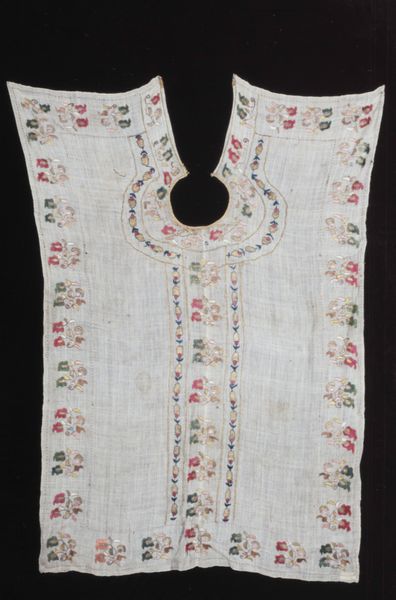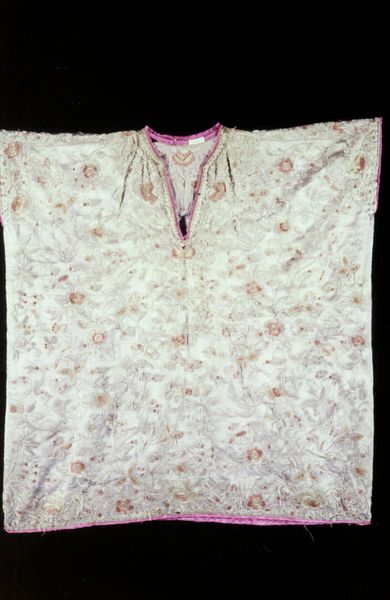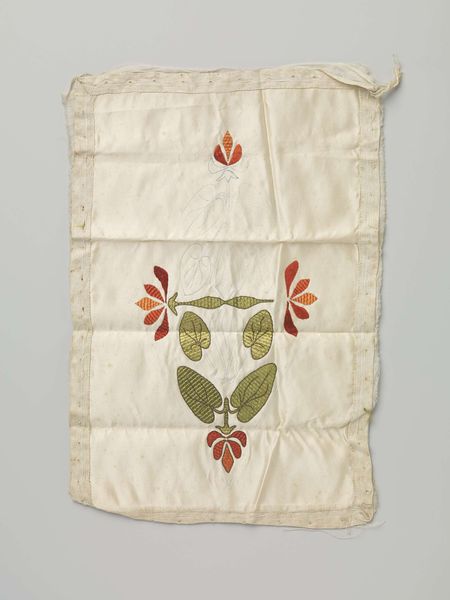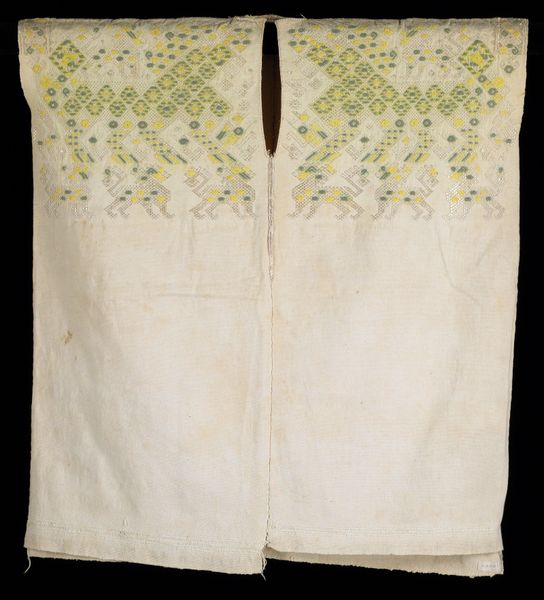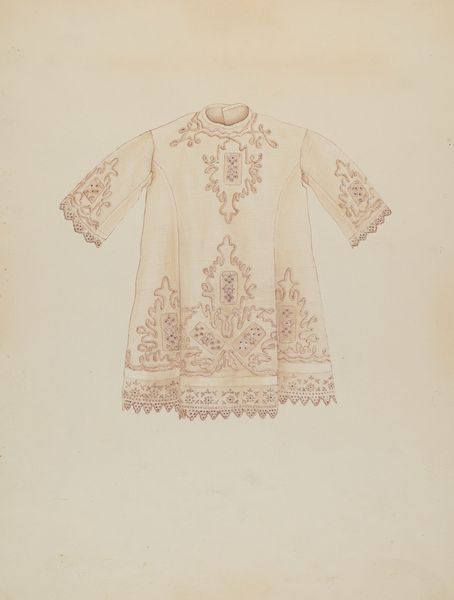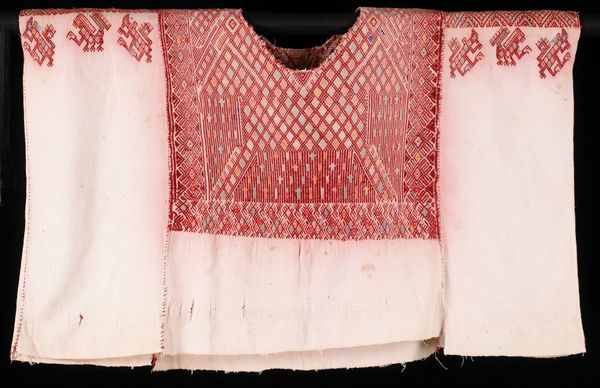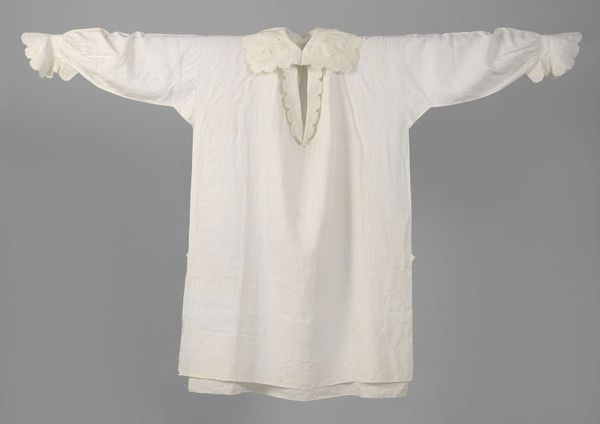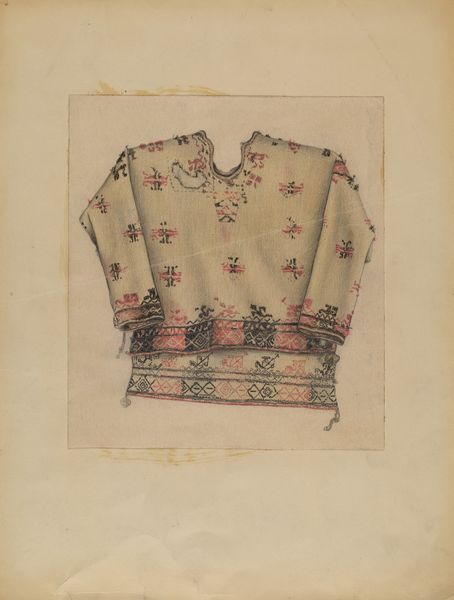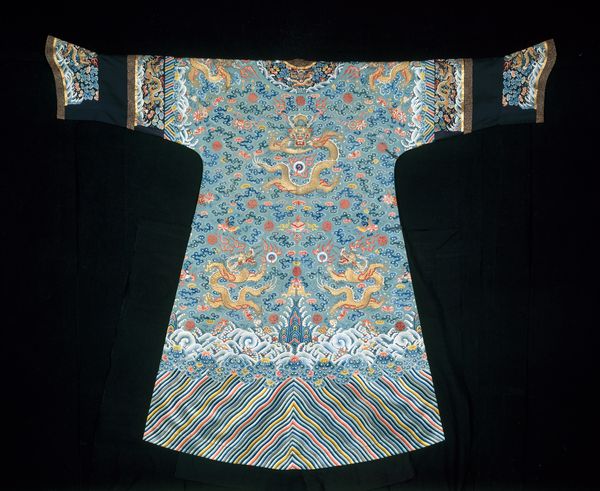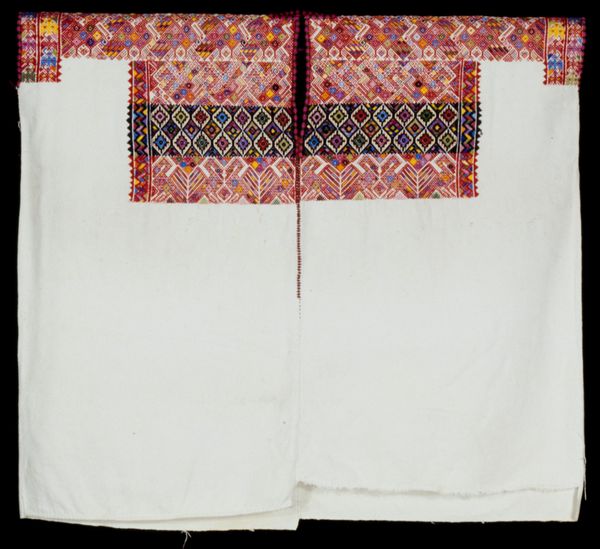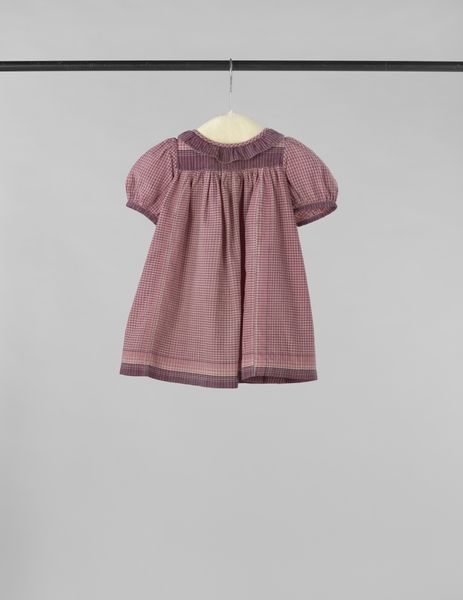
silk, textile
#
silk
#
fashion mockup
#
textile
#
clothing promotion photography
#
collage layering style
#
fashion and textile design
#
clothing photography
#
sportswear sale photography
#
clothing photo
#
textile design
#
imprinted textile
#
clothing design
Dimensions: 37 x 35 1/4 in. (93.98 x 89.54 cm)
Copyright: Public Domain
Curator: Welcome. We're standing before "Tunic," a textile piece created around the 20th century. It's part of the collection here at the Minneapolis Institute of Art. The material is primarily silk, lending a subtle sheen to its simple form. Editor: My initial impression is one of quiet elegance. The embroidered floral pattern at the neckline draws the eye immediately, its colors offering a gentle contrast to the cream-colored fabric. There's something almost demure about it. Curator: It’s fascinating how this seemingly simple garment embodies a complex web of labor. Who were the silk producers, the dyers, and the embroiderers who contributed their skills? The garment represents layers of human interaction within the textile industry. Editor: Absolutely, and looking at the design itself, the symmetrical arrangement of the flowers speaks volumes. There's a clear effort towards balance and harmony, almost classical in its approach. The shapes of the embroidered elements and the placement create an intrinsic rhythm that pleases the eye. Curator: Thinking about production, how were these garments consumed? Were they part of local trade, destined for global markets, or created for a specific community or individual? What does its existence tell us about class structures and access to resources? Editor: Beyond its material history, consider the color palette itself. The gentle lilacs and reds suggest sophistication and a cultivated sensibility. The simplicity of the cut contrasts strikingly with the detail above, a purposeful union of utility and ornament. Curator: Considering the conditions, skill, and social status of textile workers helps to undermine these idealized views. These items weren't solely aesthetic objects, they reflect social inequalities and the realities of craft production. It is an artifact deeply entrenched in its socio-economic context. Editor: That's very insightful. Still, there's a refined and calming presence to it. It manages to feel at once timeless and culturally specific. A close study rewards your eye. Curator: Investigating textiles through a materialist lens reveals labor processes that remain unacknowledged. Thinking of these complex manufacturing histories complicates our interaction with them. Editor: Yes, I think this analysis grants the piece an intriguing multi-layered reading. Curator: Agreed. Let's proceed to the next object. Editor: Gladly, let's go.
Comments
No comments
Be the first to comment and join the conversation on the ultimate creative platform.

